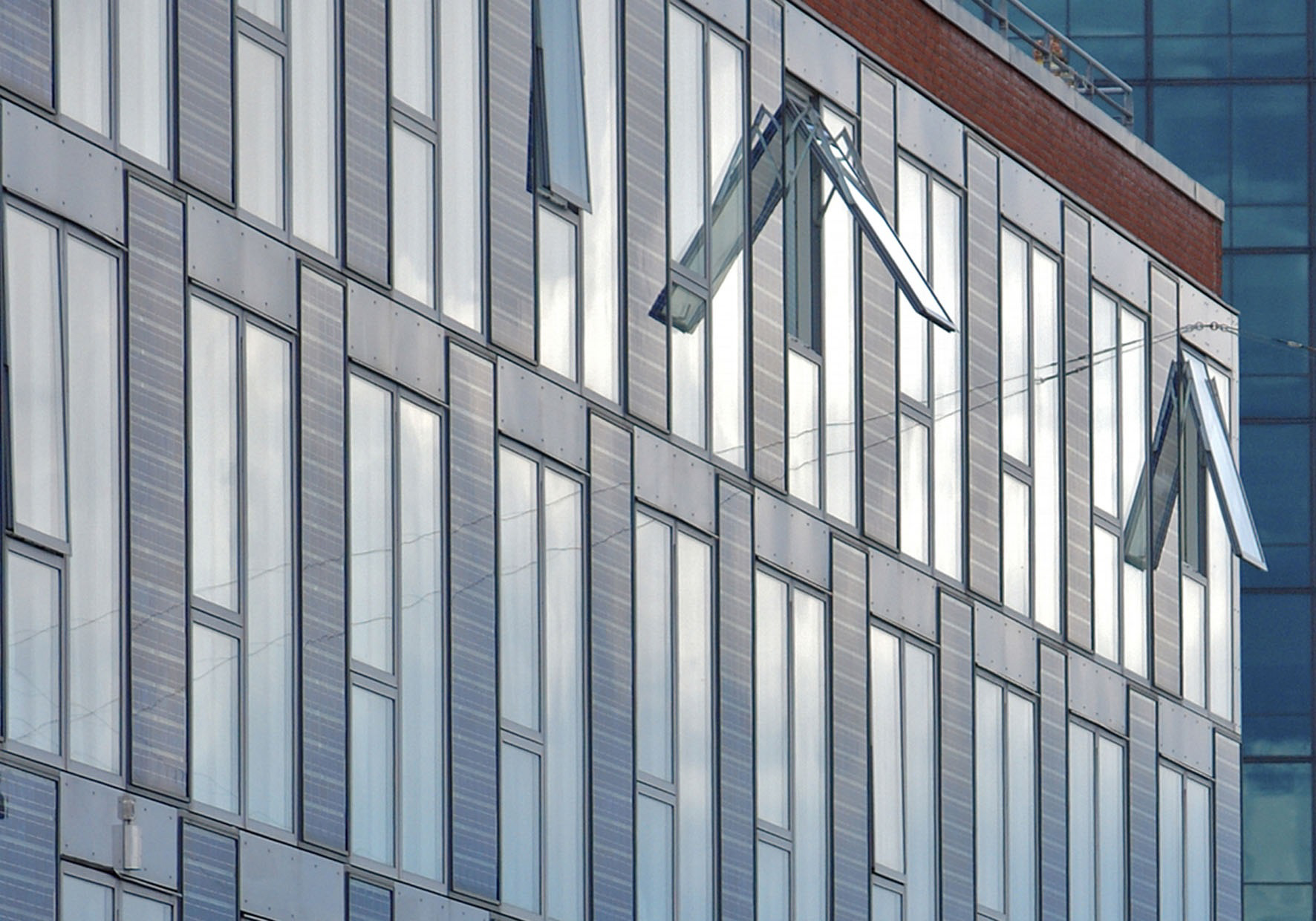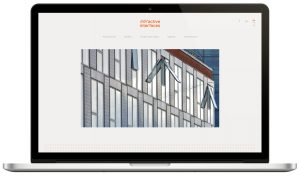
Stratégies opérationnelles permettant de dépasser les obstacles actuels à une large intégration quantitative et qualitative du BIPV aux processus de renouvellement urbain.
Ce projet de recherche contribue à la nouvelle «Stratégie énergétique 2050» de la Confédération qui requiert 10 GW d’énergie photovoltaïque (PV). A travers une approche holistique, le projet propose des stratégies concrètes afin de dépasser les obstacles à une large intégration quantitative et qualitative des systèmes photovoltaïques intégrés aux bâtiments (BIPV) lors des processus de renouvellement urbain. A l’heure actuelle, malgré les progrès technologiques et économiques, seul un faible pourcentage du potentiel solaire électrique est valorisé par des systèmes BIPV (éléments de façade ou de toiture).
Le projet de recherche fait l’analyse des diverses barrières qui tendent à limiter l’implémentation massive de BIPV aux échelles architecturale et urbaine. Il fait aussi la proposition de solutions alternatives développées au travers d’approches holistiques liées à la production industrielle, aux contraintes constructives et légales, à la qualité architecturale et aux aspects socioculturels. Dans une optique de durabilité, les nouvelles solutions proposées prennent en considération une liste étendue de critères (confort, énergie, ACV, coûts, esthétique, prix de l’électricité et connexion au réseau). L’élaboration d’études de cas réelles, réalisées sur des sites représentatifs, permet d’établir une continuité entre le développement d’éléments industriels et la génération de connaissances opérationnelles directement intégrées aux stratégies de design adaptées et innovantes.
Partenaires du projet
Laboratoire d’architecture et technologies durables (LAST), PV-LAB, LIPID, CSEM, ISAAAC (SUPSI), CC EASE (HSLU), IBI (ETHZ), IWÖ (FHSG), IEnergy (EIA-FR), econcept AG.
Equipe de recherche LAST
Prof. Emmanuel Rey, Dr. Sophie Lufkin, Dr. Sergi Aguacil
Financement
Fonds national suisse de la recherche scientifique (FNS) – Programme National de Recherche PNR 70
Site web

Thèses
Architectural Design Strategies for Building-Integrated Photovoltaics in residential building renovation processes
S. Aguacil Moreno / E. Rey (Dir.)
Lausanne, EPFL, 2019. Urban planning support based on the photovoltaic potential of buildings: a multi-scenario ranking system
G. Peronato / M. Andersen; E. Rey (Dir.)
Lausanne, EPFL, 2019. Principales publications
Exploring the Robustness of Building-Integrated Photovoltaics Renovation Scenarios to Climate Change Perspectives: Results for a multi-family building in the Swiss context
S. Aguacil Moreno; É. Nault; E. Rey
2020-09-03. 35th Passive and Low Energy Architecture PLEA 2020 Conference, La Coruña, Galicia, Spain, September 1-3, 2020. p. 1233-1238. DOI : 10.17979/spudc/9788497497947. Architectural Design Strategies for Building-Integrated Photovoltaics in residential building renovation processes
S. Aguacil Moreno / E. Rey (Dir.)
Lausanne, EPFL, 2019. Active surfaces selection method for building-integrated photovoltaics (BIPV) in renovation projects based on self-consumption and self-sufficiency
S. Aguacil Moreno; S. Lufkin; E. Rey
Energy & Buildings. 2019-03-22. Vol. 193, p. 15-28. DOI : 10.1016/j.enbuild.2019.03.035. Urban planning support based on the photovoltaic potential of buildings: a multi-scenario ranking system
G. Peronato / M. Andersen; E. Rey (Dir.)
Lausanne, EPFL, 2019. 3D model discretization in assessing urban solar potential: the effect of grid spacing on predicted solar irradiation
G. Peronato; E. Rey; M. Andersen
Solar Energy. 2018-12-01. Vol. 176, p. 334-349. DOI : 10.1016/j.solener.2018.10.011. Assessing the photovoltaic potential of flat roofs: Insights from the analysis of optimised array arrangements
G. Peronato; S. Aguacil Moreno; A. Legrain; E. Rey; M. Andersen
2018-12-10. PLEA 2018: Smart and Healthy Within the Two-Degree Limit, Hong-Kong, China, December 10-12, 2018. p. 1032-1033. Assessment of the Building‐Integrated Photovoltaic potential in urban renewal processes in the Swiss context: Complementarity of urban‐ and architectural‐scale analyses
S. Aguacil Moreno; G. Peronato; M. Andersen; E. Rey
2018-12-10. PLEA 2018: Smart and Healthy Within the Two-Degree Limit, Hong-Kong, China, December 10-12, 2018. p. 347-352. Influence of design‐decisions on the energy performance of renovation projects with building‐integrated photovoltaics: Results for a 1968 residential archetype in Neuchâtel (Switzerland)
S. Aguacil Moreno; S. Lufkin; E. Rey
2018-12-10. PLEA 2018: Smart and Healthy Within the Two-Degree Limit, Hong-Kong, China, December 10-12, 2018. p. 598-603. A toolkit for multi-scale mapping of the solar energy-generation potential of buildings in urban environments under uncertainty
G. Peronato; P. Rastogi; E. Rey; M. Andersen
Solar Energy. 2018. Vol. 173, p. 861-874. DOI : 10.1016/j.solener.2018.08.017. ACTIVE INTERFACES – Holistic design strategies for renovation projects with building-integrated photovoltaics (BIPV)
S. Aguacil Moreno; S. Lufkin; E. Rey
Energy Night 2.0, Energy BPT Group, Ecole polytechnique fédérale de Lausanne, Lausanne, Switzerland, October 25, 2017.

